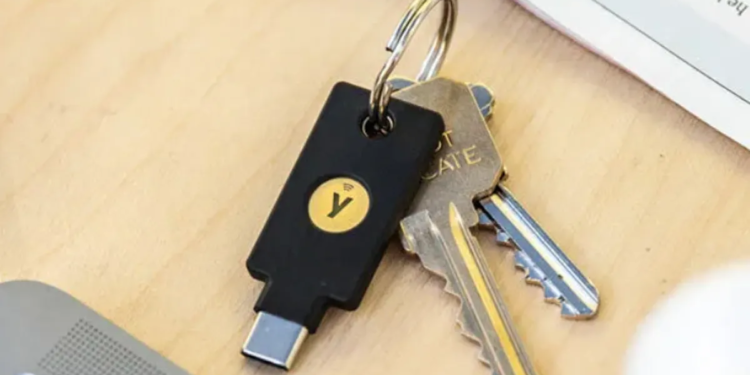
Observe ZDNET: Add us as a preferred source on Google.
ZDNET’s key takeaways
- Dashlane now helps you to login to its password supervisor with a passwordless passkey.
- The function relies on a draft normal from the World Huge Net Consortium.
- It is not anticipated to work on the cellular model of Dashlane till early subsequent yr.
The overwhelming majority of cybersecurity transgressions — lots of which result in the exfiltration of confidential data or monetary losses — begin with a password phishing rip-off.
Analysis shows that 98% of end-users proceed to fall prey to phishers regardless of cybersecurity coaching. The one reply to the phishing scourge is an industry-wide effort to eliminate passwords (embellished with second-factor codes or not) as the first technique of authenticating with web sites, apps, and different on-line companies (collectively known as “relying events”).
Additionally: How passkeys work: The complete guide to your inevitable passwordless future
And that is what the FIDO Alliance’s passwordless passkey standard is all about: providing a brand new, safe strategy to login that does not require you to furnish a secret like a password as part of a typical authentication workflow. (See ZDNET’s series on how passkeys work.) The logic goes this manner: If there isn’t any password to share with a reliable relying occasion, then there isn’t any password to by accident share with phishers and different social engineers.
Drawback solved. Proper? Effectively, kind of.
The final mile of credential administration
In an effort to use passkeys, you may additionally want an interlocutor — resembling a password supervisor — to deal with their creation, safe storage, and presentation (at time of login). Traditionally, this has introduced an intractable chicken-and-egg paradox in relation to logging into the password supervisor itself. If it’s essential to be logged in to your password supervisor with the intention to login to every part else with no password, then how is a passwordless login to your password supervisor potential with out the assistance of that password supervisor? In spite of everything, you are not logged into it. And, if there’s one password you by no means wish to get phished for, it is the password to your password supervisor — the proverbial key to the dominion.
Though this final susceptible mile of credential administration is technically addressed by a proposed extension (WebAuthn PRF) to a World Huge Net Consortium normal (WebAuthn: one of many key constructing blocks to the passkey normal), the draft normal has but to be extensively embraced with wholly passwordless implementations by third-party cross-platform password managers.
BitWarden is likely one of the early supporters of the standard in its password supervisor (here’s a video exhibiting it in motion) and the password supervisor in Google Chrome approximates the idea when customers activate Google’s Advanced Protection Program).
Now, Dashlane has partnered with Yubico to hitch the listing of WebAuthn PRF-compliant password managers to remove the necessity for a grasp password when logging into its namesake password administration utility.
Seems like voodoo. How does it work?
In the case of third-party password administration options (formally referred to by the WebAuthn and passkey requirements as virtual authenticators), the person’s password to their password supervisor truly serves a twin goal. As is usually the case with many different relying events (particularly ones that do not but help passkeys), the password serves as the premise for logging into the person’s password administration account.
Moreover, within the case of most password managers, the person’s grasp password is a secret bit of fabric that additionally performs a task within the algorithms used to uniquely encrypt and decrypt the person’s password administration vault. (This can be a particular software program container that securely shops the person’s varied web site and app credentials — and generally different delicate secrets and techniques like bank card numbers.) Wherever that vault resides — on any of your units or within the password supervisor’s cloud– it resides there in encrypted type. The one strategy to decrypt it, notably when your gadget first begins to run your password supervisor as a kind of background process, is with the grasp password to your password supervisor. That is one motive that your vault is protected from hackers when your password supervisor syncs your vault to its cloud for the aim of syncing it to your different units. Wherever it resides in encrypted type, it is ineffective to hackers.
Additionally: The best password managers: Expert tested
As such, dropping your password in favor of a passwordless passkey as the premise for authenticating along with your password supervisor truly presents two technical conundrums:
- There have to be a strategy to recall the passkey to the password supervisor with out the interlocution of the password supervisor itself.
- One other distinctive and unphishable secret have to be substituted on your password because the confidential ingredient for vault encryption and decryption.
Enter Yubico’s Yubikey. A number of fashions of this widespread safety key can hook up with your units by way of USB or, within the case of some fashions, by way of the wi-fi near-field communication (NFC) normal (the identical {industry} wi-fi proximity normal that means that you can faucet a point-of-sale bank card terminal along with your bank card or smartphone).
Yubico’s YubiKey 5C NFC is enabled for USB-C and wi-fi NFC connectivity to desktops, laptops, and cellular units.
Yubico
The WebAuthn PRF specification prescribes an {industry} normal technique by which a bodily FIDO2-compliant safety key (formally described as a roaming authenticator by the WebAuthn normal) can take over each roles; first as a separate and safe container for the passkey that you will use to login to your password supervisor (thereby fixing for the primary rooster and egg paradox) and second as a supply of the distinctive and secret materials from which that passkey and the keys for encrypting and decrypting your vault are derived.
Additionally: The best security keys: Expert tested
Just like the Safe Enclaves discovered on all Apple units and the Trusted Platform Modules (TPMs) present in {hardware} that run Home windows, Linux, and Android, each YubiKey is uniquely encoded with secret data that units it aside from different YubiKeys (in addition to from different FiDO2-compliant roaming authenticators like Google’s Titans). In different phrases, no two roaming authenticators are precisely the identical.
When you remove the password to your password supervisor, and given how your passkey to your password supervisor, in addition to the keys for encrypting and decrypting your vault, are derived from that secret bit of fabric, you can not login to your password supervisor or decrypt your vault with out first connecting that very same bodily roaming authenticator to your gadget. For that reason, as soon as you choose to make use of a roaming authenticator to login to your password supervisor, menace actors can now not phish or in any other case socially engineer you for the credentials to your password supervisor. No one — neither they nor you — can login with out being in bodily possession of your roaming authenticator.
However there is a hitch or two
Whereas WebAuth PRF-compliant password managers are lastly fixing for that final susceptible mile, there are two gotchas, one among which just about eliminates the prospect that you will be making the change immediately.
The primary and most blatant of those gotchas has to do with the chance that you possibly can lose your roaming authenticator. If all you’ve gotten is one roaming authenticator and also you lose it, you may additionally lose entry to any wholly passwordless accounts– together with that of your password supervisor — whose passkeys had been saved on that gadget.
Additionally: I’m ditching passwords for passkeys for one reason – and it’s not what you think
Happily, the way in which the WebAuth PRF normal works, it is potential to make use of the primary roaming authenticator to initialize a number of backup roaming authenticators in an effort to shield your self from the lack of any of them. That is why having backup roaming authenticators is not simply really helpful. It is crucial. With out such a backup, there isn’t a automated restoration routine just like the one which exists in case you lose or neglect the password to your password supervisor.
“You have to arrange an additional key,” Dashlane director of product innovation Rew Islam instructed ZDNET. “You [stow] that key wherever you need and even go along with a number of [roaming authenticators].” In accordance with Islam, if Dashlane had been to supply a restoration workflow that concerned a secret phrase or electronic mail, it will utterly undo the phishing-proof nature of the WebAuthn-compliant strategy utilizing a YubiKey.
Additionally: Your passkeys could be vulnerable to attack, and everyone – including you – must act
“If we assured 100% availability of your account, then there’s actually no safety,” stated Islam. Implying that almost all such automated restoration mechanisms are susceptible to social engineering, Islam stated, “I can acquire entry to your account.”
Nevertheless, managing backup roaming authenticators is simpler stated than completed. For instance, for instance you are happening a visit and you may’t lose entry to your password supervisor whilst you’re away. What number of roaming authenticators must you carry, and what’s your technique for storing them in order that the lack of one would not additionally contain the lack of the others? These are issues that you do not want to consider with a recoverable, albeit phishable, password.
If that is not sufficient to present you trigger for pause, the opposite gotcha will probably be.
The gaps: iOS and Android help
The concept behind a roaming authenticator is that, as soon as you have set it up, you may “roam” it to any of your units. For instance, the identical roaming authenticator ought to allow you to login to your password supervisor out of your smartphone in addition to your pocket book pc. In spite of everything, you may want it for logging into your whole completely different accounts from each units. Sadly, immediately, in relation to WebAuth PRF compliance, there are gaps in how the draft normal is supported on iOS and Android.
“When there are these requirements, we’ve to attend for the platforms to resolve what to do with them. Passkeys are successful as a result of Microsoft, Google, and Apple signed as much as implement them; implementing this stuff into their programs, their working programs, their browsers,” stated Islam. “However that does not imply they need to implement each single piece of the specification. So, what has occurred? On [iOS] and Android, among the plumbing for [roaming authenticator] help is simply lacking.”
Additionally: This new cyberattack tricks you into hacking yourself. Here’s how to spot it
Islam expects that, with the assistance of some new Software program Improvement Kits (SDKs) coming from Yubico, the gaps will probably be stuffed by early subsequent yr. However in the interim, in case you want entry to Dashlane in your cellular gadget, now will not be a great time to transform to an entirely passwordless configuration of the password supervisor. The method, a minimum of because it pertains to Dashlane, is irreversible.
“We all know that that is making a state of affairs that is not actually snug,” stated Islam, who prompt that the child step was nonetheless needed in an effort to transfer industry-wide adoption of the WebAuthn PRF normal ahead. “We want that discomfort to push sure issues [in the industry forward]. So it was a strategic choice. Now, it’s only a ready recreation.”
Keep forward of safety information with Tech Today, delivered to your inbox each morning.



